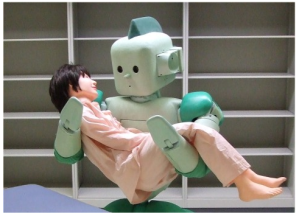So I was a bad student. Every evening, I would head home with school snapping at my heels. My reports testified to my schoolmaster’s disapproval. When I wasn’t bottom of the class, I was second to last. (Champagne all round!) At first severe spelling difficulties, rebellious when it came to memorizing dates and places, incapable of learning foreign languages, and with reputation for laziness (lessons not learned, homework not done), I brought home pitiful results unredeemed by music, or sport, or indeed any extra curricular activity.
When I wasn’t bottom of the class, I was second to last. (Champagne all round!) At first severe spelling difficulties, rebellious when it came to memorizing dates and places, incapable of learning foreign languages, and with reputation for laziness (lessons not learned, homework not done), I brought home pitiful results unredeemed by music, or sport, or indeed any extra curricular activity.
I was an object of amazement, and continual amazement at that, as the years rolled by without any signs of improvement to my educational torpor. “I’m flabbergasted!” and “Well, I’ll be damned!” are phrases I associate with adults starting at me in total disbelief, as they registered my failure to get my head round anything at all.
She’s never really got over the fact that I was a bad student.
From early on, my future appeared so compromised that she could never feel entirely confident about my present. Not destined to become anything I wasn’t equipped to survive as far as she was concerned. I was her precarious child.
 There is, of course, the question of root cause. How did I become a dunce in the first place? Child of a middle –class civil servant, born into a close, loving family, surrounded by responsible adults ho helped with my homework… My father was a polytechnicien, my mother a housewife, no divorce, no alcoholism, no emotionally disturbed relatives, no hereditary defects, three brothers who had all passed the baccalaureat (all mathematicians:; two became engineers, the third an army officer), normal family routine, healthy diet, books in the home, cultural interests commensurate with background and era: painting up to the Impressionist poetry up to Mallarme, music up to Debussy, Russian novels, a predictable phase of reading Teilhard de Chardin, Joyce and Cioran if they were feeling really adventurous, calm, laughter-filled and cultivated mealtime discussions.
There is, of course, the question of root cause. How did I become a dunce in the first place? Child of a middle –class civil servant, born into a close, loving family, surrounded by responsible adults ho helped with my homework… My father was a polytechnicien, my mother a housewife, no divorce, no alcoholism, no emotionally disturbed relatives, no hereditary defects, three brothers who had all passed the baccalaureat (all mathematicians:; two became engineers, the third an army officer), normal family routine, healthy diet, books in the home, cultural interests commensurate with background and era: painting up to the Impressionist poetry up to Mallarme, music up to Debussy, Russian novels, a predictable phase of reading Teilhard de Chardin, Joyce and Cioran if they were feeling really adventurous, calm, laughter-filled and cultivated mealtime discussions.
Despite all this, a dunce.
Since 1662 the French word cancre has referred to a student who doesn’t succeed at school. This compromises an extension of the word’s primary meaning: “crab”.
It’s a telling metaphor. The dunce is a student who doesn’t follow the straight and narrow path of normal schooling he moves slowly and sideways, far behind the students ahead of him on the path to academic success…
Einstein, Balzac, Chaplin, Edison, Charlemagne, Debussy, Darwin, Picasso and dozens of others were dunces. If they’d been “no-hopers”, they would have stayed that way. Exceptional gifts which school didn’t know how to bring out were waiting deep inside their duncedom.
Duncedom is a tumor from which certain children suffer, and of which they must be cured, for it can prove fatal to society.
So the dunce is not just a bad student. That he is a bad student is, rather, a consequence of being inhibited by his duncedom, as is his potential to be lazy, unruly, violent, a liar, a truant etc. “Bad student” is then an inadequate and even inaccurate translation of cancre, since it attempts to pass of consequence for cause.
Our “bad students”, the ones slated not to become anything, never come to school alone. What walks into the classroom is an onion: several layers of school blues – feat, worry, bitterness, anger, dissatisfaction, furious renunciation – wrapped round a shameful past, an ominous present, a future condemned. Look, here they come, their bodies in the process of becoming and their families in their rucksacks. The lesson can’t really being until the burden has been laid down and the onion peeled. It’s hard to explain, but just one look is often enough, a kind remark, a clear, steady word form a considerate grown-up, to dissolve those blues, lighten those minds and settle those kids comfortably into the present indicative.
Naturally, the benefits are temporary; the onion will layer itself back together outside the classroom, and we’ll have to start all over again tomorrow. But that’s what teaching is all about: starting over again and again until we reach the critical moment when the teacher can disappear.
If we fail to set our students in this course … their existence becomes potholes on an indefinite missing. Of course we have not been alone in digging the tunnels or not knowing how to fill them, but these women and men have still had one or more years of their youth, sitting in front of us. And it is not nothing, a year of schooling (damn): this is eternity in a jar.
Excerpts from the book School Blues by Daniel Pennac. Link to the article about his book in French Chagrin D’Ecole.















